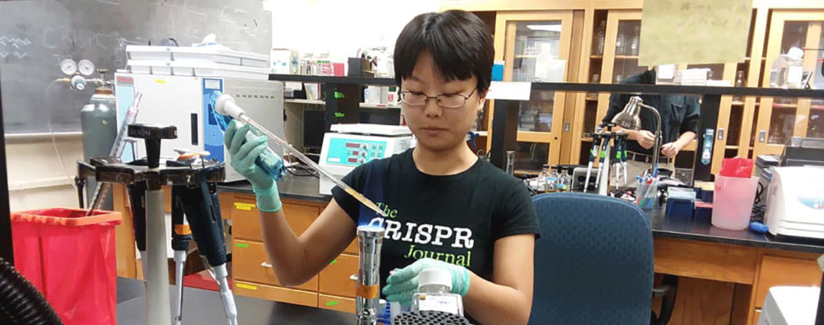
What is CRISPR Technology? Part 1
A new discovery is creating a lot of interest gene editing. CRISPR is a technology that allows scientists to make precise changes in genetic code. To find out more about this scientific discovery and its potential uses, Best Food Facts asked blogger Lynne Feifer of 365 Days of Baking to bring her passion for food into the research lab and explore CRISPR technology.
Lynne interviewed Dr. Rodolphe Barrangou in his laboratory at North Carolina State University. “I tend to think of myself as a CRISPR expert and CRISPR enthusiast, as well as a food scientist,” he said.
Lynne asked Dr. Barrangue to explain what CRISPR is.
“CRISPR is actually an acronym, which stands for Clustered Regularly Interspaced Short Palindromic Repeats. It’s a very cumbersome name arguably, but at the same time a very catchy and easy to remember acronym,” he said.
Dr. Barrangou explained that this gene-editing technology works much like a text editor that changes a letter in a word.
“CRISPR in many ways is a molecular scalpel that enables scientists to cut DNA. You can very precisely, very selectively, very efficiently cut DNA. That’s what geneticists do. They find a particular sentence that is unique in the book of life in the DNA code of any particular cell, look for the mistake and then replace this mistake and edit it out with this corrected version,” he explained.
There are many ways that it can be used.
“It’s a question of when, not if, CRISPR-based technologies solve the biggest challenge of medicine, things like curing HIV, curing Duchenne’s muscular dystrophy, curing cancer, curing people who are sick,” Dr. Barrangou said.
Lynne looked further into the potential for CRISPR as it relates to treating disease and making food healthier. Check out the other videos in the series: How Can CRISPR Treat Disease? and How Can CRISPR Improve Food?


























